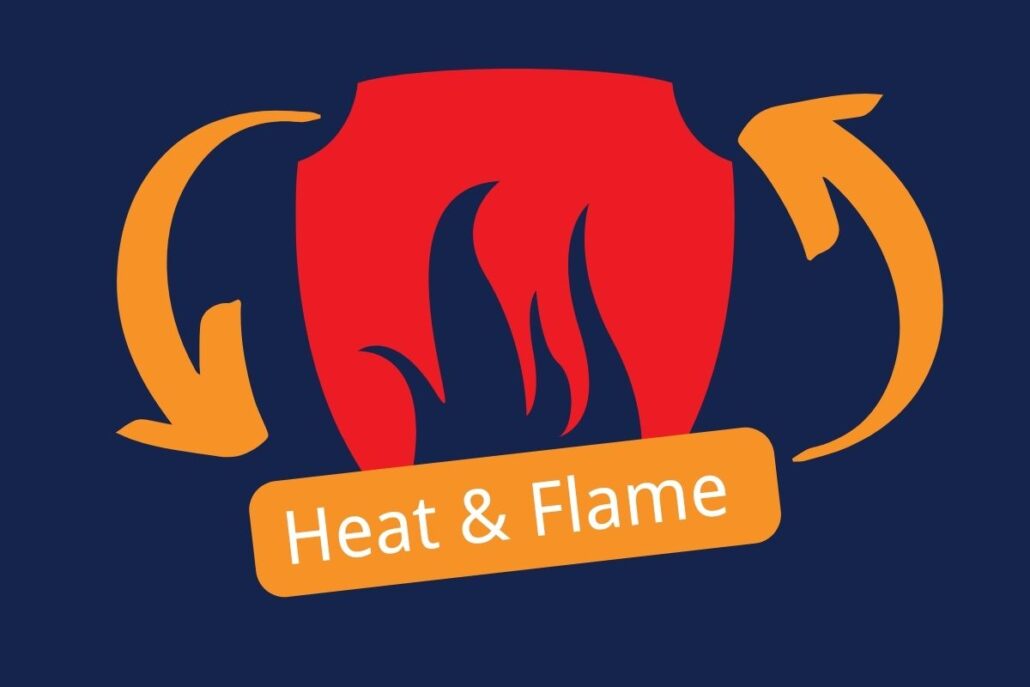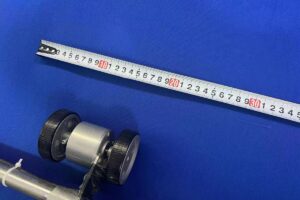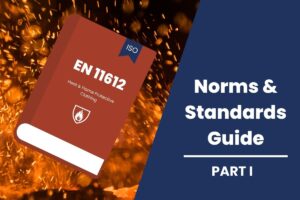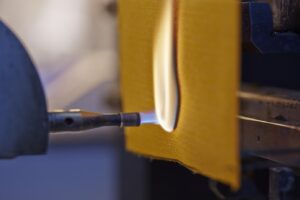Heat and flame hazards are most common in the workplace. According to OSHA, workplace fires cause about 200 deaths and more than 5,000 injuries annually. A piece of thoroughly tested and certified flame-resistant clothing can provide sufficient protection to workers.
With so many different FR fabric manufacturers on the market, how can you be sure your fabric provides the right level of protection? In this blog post, we will take a closer look at heat and flame hazards and discuss some of the critical factors you need to consider when choosing the right fabric that offers protection against these dangers.
What is a heat & flame hazard?
There is a broad category for the definition of heat and flame hazards. But essentially, heat and flame hazards refer to any features that can cause uncontrolled fire or flame and make it more severe. These hazards include flames, gasses, flammable chemicals, and sparks.
It can also mean any object that causes obstruction and affects the function of fire protective gear. For example, when the fire extinguisher system malfunctions, you can consider such a heat and flame hazard.
Similarly, a fire hazard can include omissions such as failure to clean a stove chimney or actions like thawing a frozen pipe with flammable material.
How can flame and heat cause injury?
Heat can cause significant rises in temperatures, which will lead to burns on your skin if left for extended periods. You would typically get thermal burns if exposed to heat and flame sources such as hot metals.
Burns are lacerations or damage on your skin when exposed to thermal, radiation, chemical, or electrical energy. The burns may cause cell death, skin charring, and damage to nerve endings, causing extreme feelings of pain.
Fires can cause your workwear to burn, which will burn your skin. Some clothes consist of highly flammable materials and burn at different intensities depending on the make of the fabric, chemical finishing, and fabric content.
How is the heat from a fire transmitted?
The heat from a fire can be transmitted in several ways. The most common is via convection, where hot air or gas rises and circulates the fire area. This process can create a “chimney effect” that can cause the fire to spread very rapidly. Radiant heat is also transmitted by waves of heat that travel through.
Do all FR fabrics create equal protection?
While two different fabrics may contain the word “Fire-resistant (FR) clothing” on their labels, that doesn’t mean they have the same FR capabilities. Different manufacturers may make fabrics with an FR label, but they use different materials with varying degrees of heat protection, shrinkage, strength, and others.
Therefore, not all FR fabrics offer equal protection. So, if you’re in the market for FR fabrics, the first consideration should be their flammability. It would also help if you considered the other properties below that affect the performance and quality level of the protective clothing.
Physical Performance
The following can also affect the physical performance of the textiles and, in turn, the safety of the protective clothing.
- Shrinkage to wash (dimension stability): It is not unusual for FR clothing to undergo shrinkage after washing. FR fabric shrinks because of internal stress caused by drawing and spinning. That places you in danger as the garment will not fit as intended, exposing your neck, wrist, and ankles to fire and heat hazards.
- Strength (tensile strength and tearing strength): When manufacturing the fabric, the selection of raw materials, yarn spinning and weaving, and the process of dyeing and finishing will affect the fabric strength. If the strength is insufficient, fabrics will form holes and tears easily when used, leading to total failure to provide complete protection.
Heat Protection
Flame-resistant clothing offers heat protection by either self-extinguishing or resisting ignition. Multiple properties determine the heat protection an FR garment offers, including the following:
Heat resistance at 180°C: A clothing’s fiber determines its heat-resistant properties. The fabric should be capable of withstanding ignition, shrinkage, and melting by more than 5% when in contact with heat and flames burning at 180°C before you consider it capable of providing flammability protection.
Convective heat: It involves transferring thermal energy from one region to another using a fluid (gas or liquid). FR clothing with convective heat protection properties has combined textile layers and air gaps that impede thermal energy movement to the skin.
Contact heat: Fire-resistant clothing with contact heat properties is composed of non-conductive materials and thus cannot burn or melt when it comes into contact with open flames.
Radiant heat: FR garments resistant to radiant heat help protect you from the heat transmitted through electromagnetic radiation. They come in handy for people working in the iron, automotive, and welding industry.
FR Clothing Testing Methods
Before flame-resistant clothing gets approval from a standardization body, it will undergo some tests. The fabric will undergo various standard procedures, but EN ISO 11612 and EN ISO 11611 are the standard test specifications for FR garments.
These two standards measure the textiles or garments’ capabilities to protect against the flame spread and transmission of heat. It guarantees minimum protection against heat and flames in case of a fire breakout.
There is a battery of test methods under the ISO EN 11612 standard to comprehensively assess the minimum safety requirement of protective fabric. Here below is the ISO EN 11612 test procedures list.
ISO 17493: Tests the FR garment’s resistance to heat. Protective clothing must meet the minimum heat resistance requirements at 180°C by not shrinking or melting by more than 5%.
EN 15025: Involves the application of a flame to an FR clothing material for 15 seconds and assesses its tolerance. It involves two test procedures; ISO 15025 procedure A for testing the surface ignition where they apply the flame horizontally and ISO 15025 procedure B: for testing edge ignition for a laterally applied flame.
ISO 5077: It tests for the dimensional changes of the FR garments by conducting a series of washing and drying procedures.
ISO 13934-1: The test item assesses the tensile strength of the FR clothing. A strip method to determine the maximum elongation force of the material.
ISO 13937-2: Assess the FR material’s tear forces using the trousers test.
ISO 13938-1: The uses the hydraulic method to determine the bursting strength and enlargement of the FR fabric materials. That is, its ability to maintain continuity when you subject it to pressure.
ISO 951: This checks the convective heat properties of the FR clothing by holding the sample clothing above the flame during the test and checking its reading via a calorimeter.
ISO 6942: The official exposes the FR sample to infrared rays to determine the material’s resistance to radiant heat and measures it using a calorimeter.
ISO 9185 consists of 2 codes: Code D, which determines the level of protection against aluminum splash, and Code E, which determines the protection level of FR clothing against iron splash.
ISO 12127-1: The test assesses the contact heat properties of the protective clothing by heating a metallic cylinder to 250°C and placing the FR clothing sample on it.
Final Words
Workplace fires are more prevalent than you think and are even more common in occupations such as firefighting, industrial work, and welding.
Therefore, such workers must always wear fire-resistant garments (FR) to help protect them from skin burns and injury should a fire incident occur. However, not all FR garments offer the same level of heat and flame protection.
Therefore, ensure the protective clothing you settle on has adequate heat and flame protection properties, such as radiant heat resistance, contact heat resistance, and even the ability to self-extinguish for that particular job.
Do note that FR fabrics vary in their ability of heat resistance, shrinkage to washing, and strength. Just because the material is labeled “flame resistant” does not mean it provides complete protection. Therefore, pick the fabric with adequate heat resistance and strength and can withstand wash shrinkage.
Similarly, ensure the FR fabric has passed multiple tests from an accreditable laboratory to prove its ability to protect you from heat and flame hazards.
Contact us at WOKI for the broadest range of FR protective fabrics for heat and flame hazards.







